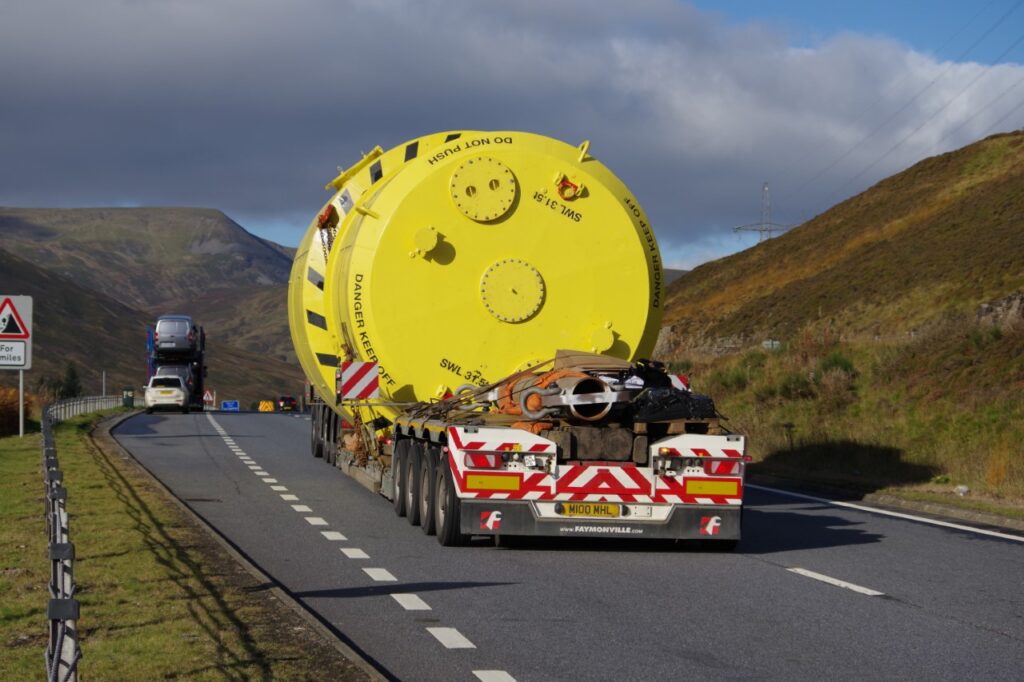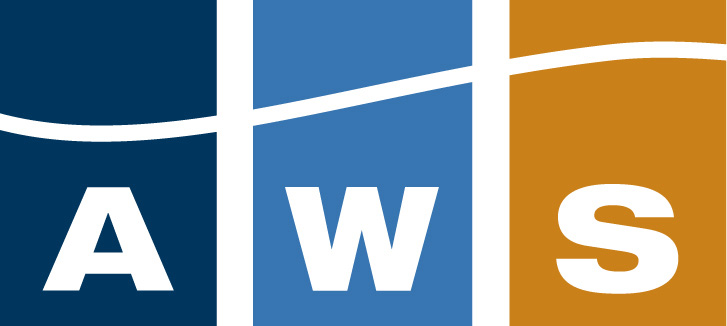Last week the Waveswing began its journey towards at sea-testing with a road-transport operation to a yard in Muir of Ord, close to AWS Ocean Energy’s headquarters outside Inverness.
Last week the Waveswing The seven-metre high, four-and-a-half metre diameter, 50 ton Waveswing left the fabrication facility at Renfrew on a low-loader and travelled north via the M90 and A9. The whole journey took around 6 hours. Both the loading and offloading, including rotating the machine from vertical to horizontal and back again went without a hitch. The Waveswing will now undergo a period of further testing before being transported to Orkney for deployment at sea.
When deployed, the Archimedes Waveswing is moored to the seabed and sits below the surface of the sea, reacting to changes in pressure caused by passing waves. It is moored on a single tension tether. The subsea location and ability to winch low in the water column enables extreme storm loadings to be avoided so that the device can continue to operate in rough sea conditions. The Waveswing is designed to react to long ocean swell waves as well as short, wind-driven seas, for high energy capture.
The prototype project has been funded by Wave Energy Scotland (WES) as part of the Novel Wave Energy Converter development programme. The demonstration at EMEC is also supported by the Interreg North-West Europe’s Ocean DEMO project.
The prototype project has been funded by Wave Energy Scotland (WES) as part of the Novel Wave Energy Converter development programme. The demonstration at EMEC is also supported by the Interreg North-West Europe’s Ocean DEMO project.
Simon Grey, CEO of AWS Ocean Energy said:
“It is great to see Waveswing complete and on the move at last. The delays caused by COVID have not been helpful and as with all R&D projects we have had our fair share of additional problems to solve as we have worked through the commissioning phase.
Surviving the road transport operation was a test in itself as the Waveswing will be towed in horizontal configuration at sea. The impact loading, vibration and accelerations experienced during a 6-hour road-trip far exceed those expected during the 2 hour tow. This has increased our confidence that we have got the design of this unit right.
We will now focus on further tests to de-risk the deployment process as far as possible. These will include a test where we use a crane to actuate the floater, thus simulating wave forces and allowing us to test the power take-off system.”

The Waveswing development programme has been supported by a strong, predominantly Scottish team of subcontractors including 4c Engineering and Quoceant on design, Sequentec on supply of the control system, Malin Marine for the main build and assembly work, and JGC Engineering for fabrication of the anchor frame. International subcontractors include Trelleborg for supply of the rolling seal and SRP Subsea for supply of the Rocksteady mooring connector. Marine operations for deployment of the device will be carried out by Stromness-based Green Marine.

